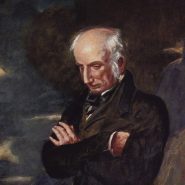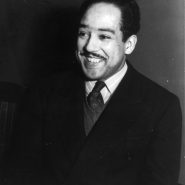By Robert Frost (1916)
Two roads diverged in a yellow wood,
And sorry I could not travel both
And be one traveler, long I stood
And looked down one as far as I could
To where it bent in the undergrowth;
Then took the other, as just as fair,
And having perhaps the better claim,
Because it was grassy and wanted wear;
Though as for that the passing there
Had worn them really about the same,
And both that morning equally lay
In leaves no step had trodden black.
Oh, I kept the first for another day!
Yet knowing how way leads on to way,
I doubted if I should ever come back.
I shall be telling this with a sigh
Somewhere ages and ages hence:
Two roads diverged in a wood, and I —
I took the one less traveled by,
And that has made all the difference.
Analysis
Robert Frost’s “The Road Not Taken,” first published in 1916 as the opening poem of his collection Mountain Interval, is among the most recognized — and most misunderstood — poems in the English language.
Beneath its pastoral simplicity lies an ironic meditation on human choice, memory, and self-deception. Though often quoted as a hymn to individuality, the poem is, in fact, a subtle, gently mocking reflection on how we narrate our lives and find meaning in decisions after the fact.
Context and Background
Frost wrote “The Road Not Taken” in 1915 while living in England, where he had befriended fellow poet Edward Thomas. The two often took long walks together in the countryside, and Thomas had a habit of second-guessing their chosen routes, regretting that they had not taken a different path.
Amused by this indecision, Frost composed the poem partly as a friendly jest — a psychological portrait of a man haunted by the possibilities he didn’t pursue. When Frost sent it to Thomas, the latter took it seriously, reading it as a profound reflection on choice, which strained their friendship.
Frost later remarked that readers persistently misunderstood the poem’s ironic tone, transforming a playful observation into an anthem of self-determination. This tension between jest and gravity mirrors the poem’s core theme: that human meaning is built as much on misreading as on truth.
Form and Structure
The poem consists of four quintains (stanzas of five lines each), written in a conversational iambic tetrameter with an ABAAB rhyme scheme.
The steady rhythm mimics walking and thought — the measured pace of reflection. Each stanza represents a stage in decision-making: observation, hesitation, choice, and retrospection.
The poem’s controlled form underscores its central irony: the appearance of freedom within the constraints of time and circumstance.
Setting and Symbolism
The “yellow wood” situates the poem in autumn, a season of transition and maturity — an apt metaphor for the moment of decision.
The diverging roads symbolize the inevitability of choice and the impossibility of knowing where each path will lead. Frost deliberately avoids specifying what the roads represent; they are metaphors for any life-defining decision.
The traveler stands at a crossroads both literal and existential, and his choice, though seemingly small, becomes a symbol of the human condition: to act without full knowledge, and to live with that act forever.
Ambiguity of Choice
Frost’s genius lies in the poem’s sustained ambiguity. At first, one road appears “grassy and wanted wear,” but the speaker soon admits that both were “really about the same.” This contradiction exposes the illusion of difference.
The traveler’s attempt to rationalize his decision mirrors how humans retrospectively assign meaning to choices that were, in reality, arbitrary. The poem thus undercuts the romantic notion of the “road less traveled” — showing instead that we construct stories to make our lives appear purposeful.
Irony and Self-Narration
The closing stanza captures this self-deception perfectly: “I shall be telling this with a sigh / Somewhere ages and ages hence.”
The sigh — ambiguous between regret and satisfaction — suggests awareness that his future retelling will not match the truth. The traveler imagines himself claiming that he “took the one less traveled by,” though the poem has shown that both roads were equal.
This final gesture is not confession but prophecy — the invention of a myth that transforms choice into identity. Frost’s subtle irony transforms the poem into both a commentary on storytelling and a mirror of our need to believe that our paths have meaning.
Philosophical and Psychological Dimensions
Philosophically, the poem explores the limits of human knowledge and the inevitability of choice. Every decision, once made, excludes countless others — “way leads on to way,” and we rarely return to reconsider. The traveler’s reflection dramatizes the human impulse to construct coherence out of randomness. We justify our actions through narrative, converting chance into destiny.
In this sense, “The Road Not Taken” is less about courage or individualism than about the way memory reshapes reality. The title itself, focusing on “the road not taken,” emphasizes absence over action — the haunting persistence of what might have been.
Sound and Tone
Frost’s plain diction conceals intricate musicality. The iambic rhythm simulates the natural cadence of walking, while the repeated “r” sounds (“road,” “yellow wood,” “both,” “perhaps”) produce a murmuring tone of contemplation.
The enjambed lines create the feeling of momentum interrupted by hesitation, mirroring the traveler’s internal debate. The tone oscillates between reflective calm and gentle irony, allowing the poem to function both as sincere meditation and subtle parody.
Theme of Self-Perception and American Individualism
Because Frost’s speaker imagines himself saying he took the “one less traveled by,” the poem has often been adopted as a statement of self-reliance — a companion to Emerson’s transcendental individualism. Yet Frost undermines this interpretation.
The poem’s irony exposes the American myth of the self-made individual as a comforting fiction. What we call independence is often retrospective justification; what we celebrate as choice may simply be chance. By allowing readers to choose between sincerity and irony, Frost invites us to confront our own self-deceptions.
Time, Memory, and Regret
The traveler’s inability to “come back” marks the irreversible flow of time. Life’s choices are not experiments but commitments — each road taken closes the others. Yet rather than despair, Frost finds dignity in this limitation. The act of choosing, however uncertain, defines us.
The poem’s beauty lies in its compassion for the self caught between freedom and fate. The “sigh” that ends the poem is not mockery but acceptance: a recognition that regret and satisfaction are inseparable companions in every human life.
Legacy and Interpretation
“The Road Not Taken” became one of Frost’s most famous poems, in part because of its interpretive openness. Politicians, motivational speakers, and readers seeking affirmation have embraced it as a declaration of independence. Yet scholars continue to emphasize its irony and psychological insight.
Frost himself, amused by its reception, once called it “a tricky poem, very tricky.” This duality — its ability to sustain both popular optimism and intellectual skepticism — accounts for its enduring appeal.
Like the traveler, readers must choose their own path through it, and whatever they decide will, in the end, “make all the difference.”
Conclusion
“The Road Not Taken” endures because it captures the essence of human decision: uncertainty, interpretation, and the need for meaning.
Frost transforms a moment of hesitation in the woods into a meditation on life’s most profound question — how to live with choices we can never undo.
Neither celebratory nor cynical, the poem invites humility: the understanding that meaning is not found in the road itself but in how we remember walking it.

